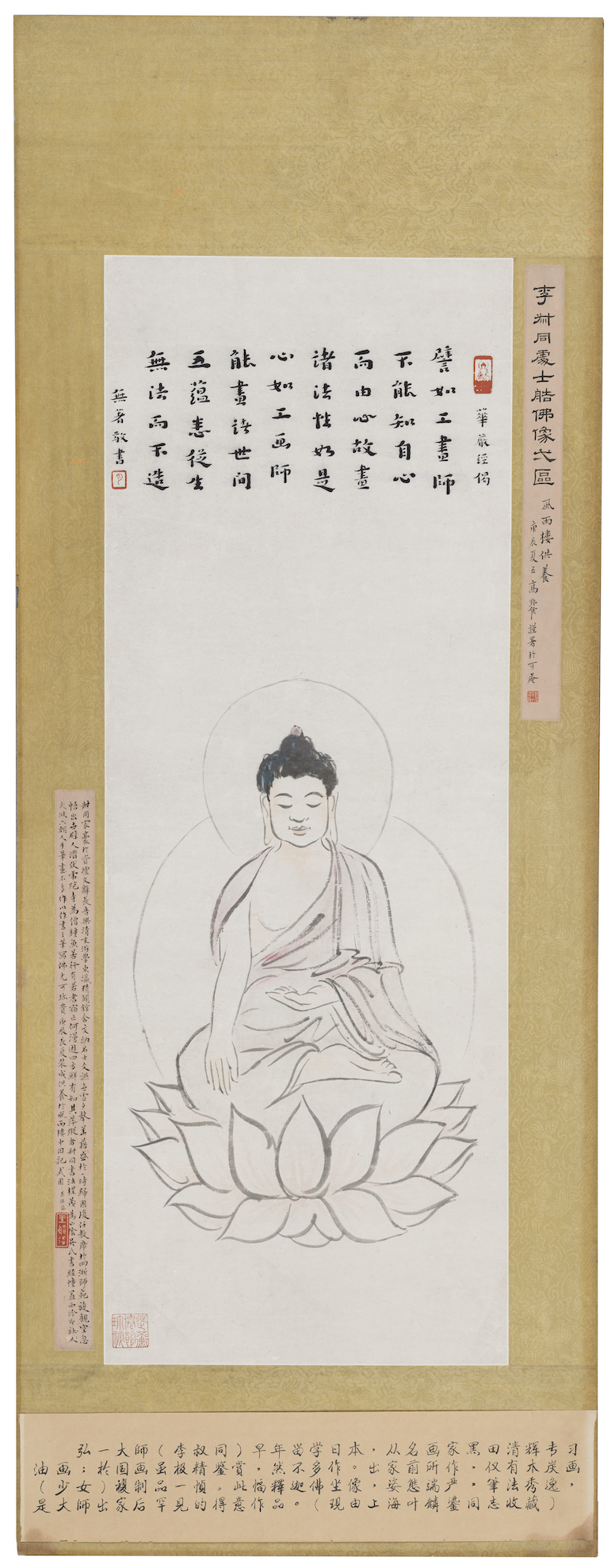
Master Hong Yi
Buddha Statue of Sakyamuni
1910s
Color on Paper
The painting was inscribed with verses from Avatamsaka Sūtra: “A painter may not know his/her own mind, yet painting with the mind, so is the nature of all dharmas. Mind is just like the painter, being able to paint the whole world: the five aggregates thus originate, and nothing comes from no dharma.” These dignified antique characters with calligraphic style of the Six Dynasties (222-589, generally refers to the six southern dynasties in Chinese history from the Three Kingdoms to the Sui Dynasty) shed light on the Buddhist philosophy and convey his comprehension in an integration of Buddhist philosophy and art of painting. The artist applied the free and unconstrained upright strokes in calligraphy to his painting. Dry or wet, dense or light, the lines are well arranged to reach their ultimate meanings and forms. The Buddha’s cloth folds were outlined with random twisted lines freely with great ease like cursive running scripts. The lines in light ink go around without any stagnation, and the slight color application among the bun and robe seems extremely plain and elegant. The Buddha serenely sat in padmasana with each lotus petal turning upward in bloom and against the glory from his back. As for the technique of artistic expression, the artist vividly portrays the Buddha in a unity of form and spirit with extremely simple yet robust lines to strengthen the artistic appeal and form a full intriguing scene with natural grace and elegant tastes.
Hong Yi studied in Japan in early days and created a majority of oil paintings before becoming a monk. These works had been preserved by the former National Art School in Beiping (later known as CAFA) but later most of them were lost. His traditional Chinese paintings were barely seen. This work was an old collection of Wang Shiyuan at his “Pavilion Against Winds and Rain (Feng Yu Lou)” in Hangzhou. In 1980, it was selected for the Calligraphy and Goldstone Music Exhibition for the 100th Anniversary of the Birth of Master Hong Yi as the sole rare traditional Chinese painting at that time. The calmly and serenely seated buddha depicted in the painting seems to stay spiritually aloof from the material constraints and gain great freedom.
(Edited by Li Hanning & Yang Zhige, 2021)

